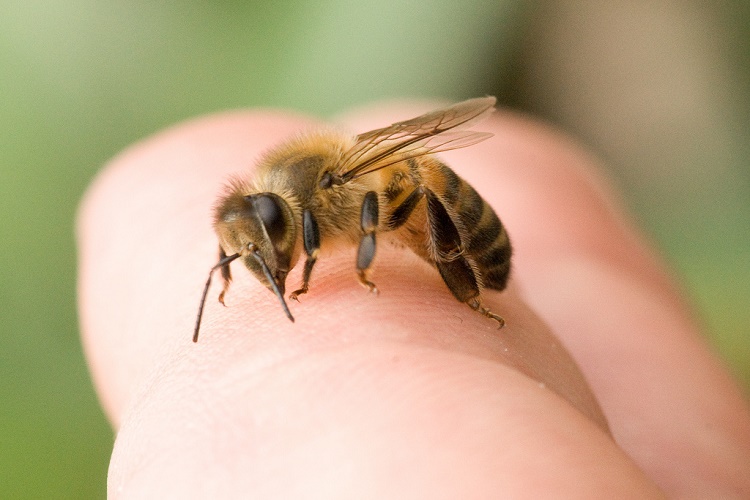Having read a number of oil related blogs on www.oil-benefits.com, I decided to offer an experience I have had using essential oils on a bee sting.
It has been an unusual summer for me, in that I have experienced a high number of bee and wasp stings. While I am an amateur bee keeper, my gear generally does a great job at protecting me from being stung. I seem to have an allergic reaction to the stings which causes swelling, redness, and a tremendous amount of itching for days after the sting takes place. While some might feel it would be smart to stop working with bees, it’s something I actually really enjoy doing—aside from the occasional sting. It is fun for me to see the bees pollinating my garden and flower beds, and the local raw honey I harvest from the hive really has helped with my other allergies.
Early last week I was tending to one of my bee hives; while I was fully protected with my bee suit, gloves, boots to my knees and a double pair of pants, one bee seemed to be more determined than the rest and was able to sting me through both pairs of pants. Feeling like a fire had been lit under my butt, I quickly rushed into the house to put some “Indian Clay” on the sting. My hope was that the clay would draw the venom out before a reaction could take place. After an hour of having the clay on the sting, I checked to see how things were going; much to my dismay, the reddening of the affected area had begun and was spreading.
Feeling as if the clay wasn’t working as it should, I pulled out my essential oils book. In the book, I found a suggested combination of oils that could potentially have a positive effect on my dilemma. Willing to try anything at this point, I applied a combination of equal parts #LemonOil, #LimeOil, #PineOil, #CitronellaOil, #TeaTreeOil, and #CilantroOil–topping it all off with an ice pack. Three hours later, I checked on the progress. To my relief the redness was lightening up, the firmness at the bite entry was softening, and things were looking much better for me.
While I’ve heard of a number of individuals that have had better experiences using “Indian Clay” than I did, I don’t think I’ll be using it on my next bee sting—unfortunately, I know there will be a next be sting. I resorted to the clay first because it was the path of least resistance for me at the moment. As we all know, sometimes the past of least resistance doesn’t provide the best results. I really am impressed with the essential oils and I’m now an even firmer believer in the many benefits they possess.
Since everyone’s bodies are unique, I can’t say that your experience will be the same as mine, but it is certainly worth a try. I certainly do not mean to imply that individuals who are very allergic to bee stings should forgo the use of an epipen and try oils. While I personally feel that essential oils were beneficial for me, they would not take the place of an epipen.

